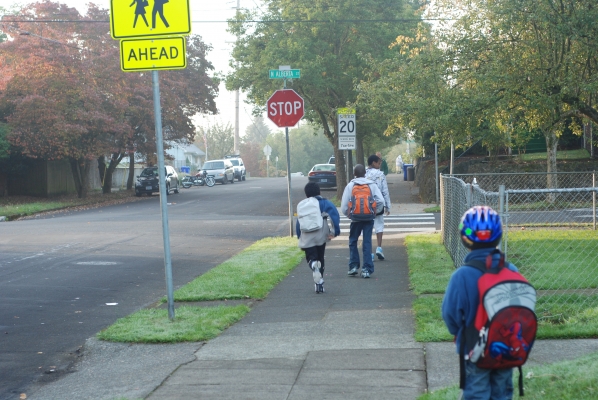Emerging field of HIA helps to assess the public health impact of future plans

New research from NITC looks at Health Impact Assessment, or HIA, in transportation planning.
The leading causes of death in the United States are no longer communicable diseases. Instead, chronic conditions linked to behaviors and shaped by environments—such as obesity and diabetes—are today’s most pressing public health concerns.
HIA is a way of evaluating the effects that planning decisions will have on public health.
Researcher Nicole Iroz-Elardo studied this relatively new endeavor, analyzing and comparing three contemporary case studies in HIA.
She will share her findings in an IBPI webinar on July 16, 2014.
By engaging professionals from multiple disciplines, HIA can give planners a larger knowledge base to inform decisions.
In a collaborative process that did not emerge in the U.S. until 1999, stakeholders and community members engage with public health professionals to identify and deliberate about health interests related to the proposed plan.
They generally focus on health equity, and use as a framework the social determinants of health: a broad range of factors developed by the World Health Organization which contribute to individuals’ physical, mental and social well-being.
Planning decisions impact social determinants of health. Providing adequate pedestrian and bicycle facilities can promote physical activity, while placing affordable housing far away from the freeway can decrease residents’ exposure to noise, traffic and air pollution. Streetscapes and culturally focused retail can contribute to social cohesion and a sense of community, and parks and open spaces improve quality of life and are a great health asset.
The focus of HIA is to make sure that factors like these are given weighted consideration when planning decisions are made.
The fact that the process is still in its infancy, along with the lack of any hard and fast legislation to govern its proceedings, makes HIA variable in its procedures and participants.
Iroz-Elardo, a Ph.D. candidate in urban studies & planning at Portland State University and a 2014 NITC dissertation fellow, selected three contemporary cases of HIA to help answer these six questions:
1. Who participates in HIAs?
2. Who defines the problem and/or sets the agenda?
3. How does the ‘nature’ of the plan affect the HIA problem definition, process and outcome?
4. Are communities able to influence decision-making?
5. Is local knowledge integrated with professional knowledge?
6. Does HIA increase the ability of health interests to influence urban governance?
Iroz-Elardo’s three case studies are a bicycle-pedestrian project in Clark County, Washington; community development in the Lake Merritt BART Station Area in Oakland, California’s Chinatown; and an I-710 corridor project in Los Angeles running through largely poor, Latino communities.
In the July 16 webinar, she will focus on what to expect from planning and public health stakeholders in HIA endeavors, which can vary greatly from case to case.
For more information, visit the project page or download the final report.
